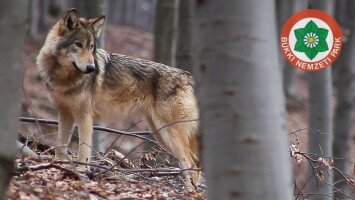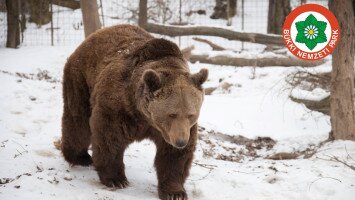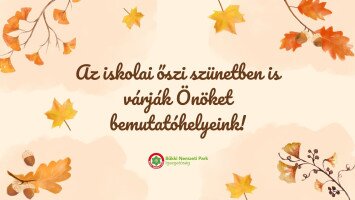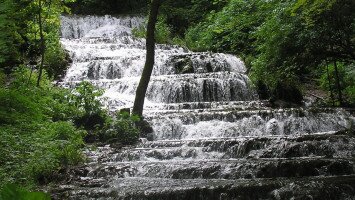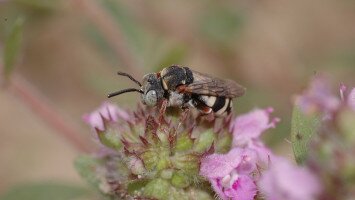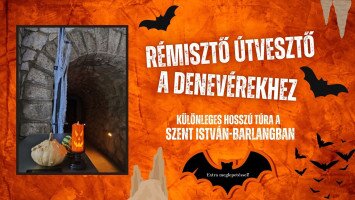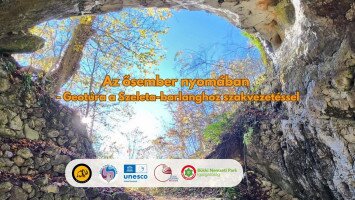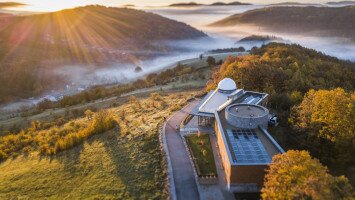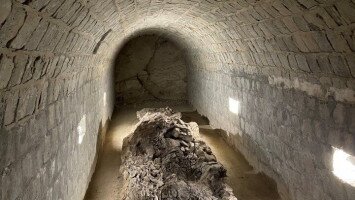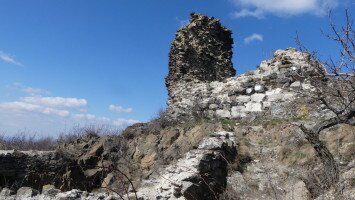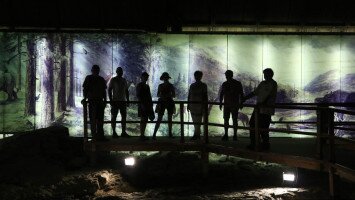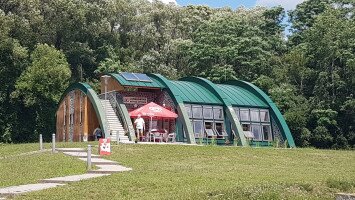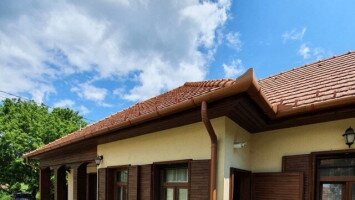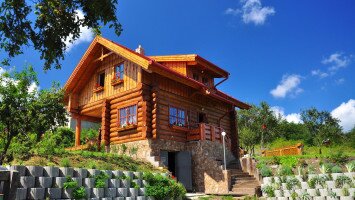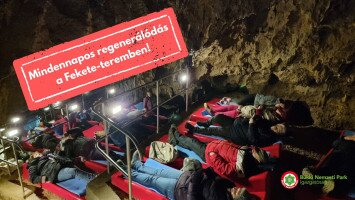
A BNPI sajtóközleménye a közelmúlt medve-észleléseivel kapcsolatban 2023.05.13. 11:28
A Kárpátok barnamedve állományának növekedése és az élőhelyeiken végbemenő változások következtében az elmúlt évek során egyre gyakrabban észlelhetünk barnamedve előfordulására utaló nyomokat a Bükki Nemzeti Park Igazgatóság működési területén. A kárpáti medveállomány elterjedési határa eléri a faj számára alkalmas hazai élőhelyeket.
A hazánkban megjelenő egyedek egy része olykor nagyobb távolságokat is megtesz, ahogy néhány éve a jeladózott „Iwo” nevű példány 2015. évi dokumentált kóborlása is mutatta. A Lengyel-Tátra területén jelölt példány közel egy évig nem tett meg nagyobb távolságokat eredeti élőhelyétől, később néhány hét leforgása alatt elérte hazánk területét, majd az országból visszafordulva egészen Ukrajnáig jutott. A barna medvék többsége hosszabb-rövidebb idejű itt tartózkodásuk alatt viszonylag észrevétlenek maradnak.
Azonban az idei csapadékosabb tavasz során a felázott talajon már több helyen kerültek elő a hozzánk látogató példányok lábnyomai, illetve az éjjel-nappal működő kameracsapdák néhány alkalommal felvételeket is készítettek a megjelenő egyedekről. Az elmúlt évben egy érdekes változásnak lehettünk tanúi. Már tavaly októberben is jeleztük, hogy egy előző év májusától itt élő, kifejlett hím példány nagy valószínűséggel már áttelelhetett a Bükkben, és azóta is itt tartózkodik. Ez a példány jellegzetes színezettsége alapján egyértelműen azonosítható. Rendszeresen megfigyelhető, jellemzően kelet-nyugati irányban járja a Bükk területét.
A hazai erdőkben kialakuló vágásterek növényzete, és a még idősebb erdők makktermése bőséges táplálékforrást kínál a mindenevő medvéknek. A faj megjelenéséhez valószínűleg hozzájárul az is, hogy a mára jelentősen megcsappant vaddisznóállomány nem fogyasztja el a rendelkezésre álló táplálékmennyiséget, amely a medve számára vonzó, terített asztalt kínál. Néhány évvel ezelőtt már azonosított felnőtt nőstény példány is megfordult működési területünkön.
A nagyragadozók jelenléte önmagában nem vezet konfliktushelyzetek kialakulásához. A Bükk területén élő hím medve olykor a legelő szarvasmarháktól ötven méterre táplálkozik, ahol a legelő állatállomány védelmét részben a Bükki Nemzeti Park Igazgatóság által átadott villanypásztor segíti. Felhívtuk a területen gazdálkodók figyelmét a medve jelenlétére, és az esetleges veszélyes helyzetek kialakulásának megelőzési módjaira.
A gazdálkodók szempontjából is jelentkező probléma forrása lehet a barnamedvék akár akaratlan etetése – pl. hulladéktárolókhoz való hozzáférés, vagy az erdőbe takarmányozási céllal kihordott mezőgazdasági termények, különösen az emberi fogyasztásra már alkalmatlan élelmiszerek kijuttatása –, hiszen a táplálék csábítása mérsékelheti a medvék természetes, embertől való félelmét. Az „etetés” rendszeressége a tapasztalatok szerint a szomszédos, illetve környező országokban (pl. Szlovákia, Románia, Szlovénia, Lengyelország) is jellemző, s ez nemkívánatos konfliktusláncolatok kialakulását okozhatja. Ezért kérünk minden társadalmi csoportot a felelős gazdálkodói magatartás betartására.
Ezúton is köszönjük a medvemegfigyelésekkel kapcsolatos lakossági bejelentéseket és fotókat, amelyek konkrét helymeghatározással érkeznek központi elérhetőségünkre (titkarsag@bnpi.hu).
A megfigyelések átadásával hozzájárulnak az egyedek mozgásának feltérképezéséhez. A honlapunkon további információt találnak itt: https://www.bnpi.hu/hu/hir/viselkedesi-szabalyok-m...
VISELKEDÉSI KISOKOS MEDVÉVEL VALÓ TALÁLKOZÁS ESETÉN
A medve nem játék, a medvét kerülni kell. A medvével nem kell barátkozni, bármilyen korú is legyen. A bocsok közelében nagy valószínűséggel az anya is ott van. A legtöbb konfliktus az anyamedvékhez köthető. Amennyiben medvét észlelnek, kérjük, jelezzék Igazgatóságunk felé az alábbi ügyeleti telefonszámon: +36 30 861-3808
ERDŐJÁRÓKNAK
- Ha erdőben járunk, azt a kijelölt turistautakon tegyük!Kerüljük az átláthatatlan sűrűket, bozótosokat!
- Ha nem szükséges, ne menjünk napnyugta és napkelte közötti időben az erdőbe!
- Tegyük egyértelművé a medvék számára, hogy közeledünk: ne járjunk nesztelenül!
- Társaságban beszélgessünk!
- Egyedül járva használjunk zajkeltő eszközt: például csengőt vagy rádiót!
- Ne használjunk fejhallgatót!
- Ha véletlenül mégis találkozunk a medvével, és az állat nem vett észre minket, akkor lehetőleg feltűnés nélkül, halkan, a medvét szemmel tartva, hátrálva távolodjunk el a helyszínről!
- Ha a medve két lábra áll, azt a jobb tájékozódás érdekében teszi.Ha a medve észrevesz, ne próbáljuk elzavarni!
- Ne nézzünk a szemébe!
- Ne fordítsunk neki hátat!
- Ne akarjunk elfutni, mert gyorsabb nálunk!
- Autós találkozás esetén ne hagyjuk el a járművet!
- Ne etessük!
- Ne próbáljuk közelről lefényképezni (pl. szelfizni)!
- Ha a medve közelebb merészkedik, ne provokáljuk, és ne tegyünk hirtelen mozdulatokat!
- Kutyasétáltatás és kutyával való vadászat esetén tartsuk szem előtt, hogy a medve elől menekülő kutya a gazdához fog visszafutni védelemért, nyomában a támadó medvével.
- Ne vigyünk magunkkal erős illatú élelmiszereket!
- Ne vigyünk magunkkal halkonzervet és cukrozott sűrített tejet!
- Ne hagyjuk magunk után az élelmiszer maradékát, és annak csomagolóanyagát sem!
- A maradékot lehetőleg szagmentesen csomagoljuk el, úgy vigyük tovább magunkkal!
- Sátorozáskor az élemet a sátortól távol eső fára függesszük fel!
- Az erdei kerékpározás növeli a meglepetésszerű találkozás veszélyét!
LAKOSOKNAK
- A kerítésen kívüli kerti és konyhai hulladéklerakót számoljuk föl!
- Ne dobjunk élelmiszer-maradékot a komposztba!
- A kukát csak a szemétszállítás napján tegyük ki az útra!
- A haszonállatokat zárt helyen éjszakáztassuk!
- A méhkaptárakat az erdőszegélytől távol helyezzük el!
- Alkalmazzunk megfelelően képzett, nagy testű kutyákat!
GAZDÁLKODÓKNAK
A medve látogatására ott lehet számítani, ahol a gazdálkodási egység és az erdő határa közel esik egymáshoz. A külföldi tapasztalatok alapján az erdőhatártól 500 méterrel távolabb a károkozás lehetősége elenyésző.
- Alkalmazzunk 5–8000 V feszültséget biztosító több szálas (lehetőség szerint 6 szál) villanypásztort!
- A legfelső szál 120 cm magasan legyen!
- Építsünk visszahajló felsőrésszel rendelkező, masszív kerítést a vagyontárgyak körül!
- Használjunk vadriasztó módszereket!
- A haszonállatokat zárt helyen éjszakáztassuk!
- A méhkaptárakat az erdőszegélytől távol helyezzük el!
- Alkalmazzunk megfelelően képzett, nagy testű kutyákat!
Nyitóképünk csak illusztráció, a fotó a Veresegyházi Medveotthonban készült.

